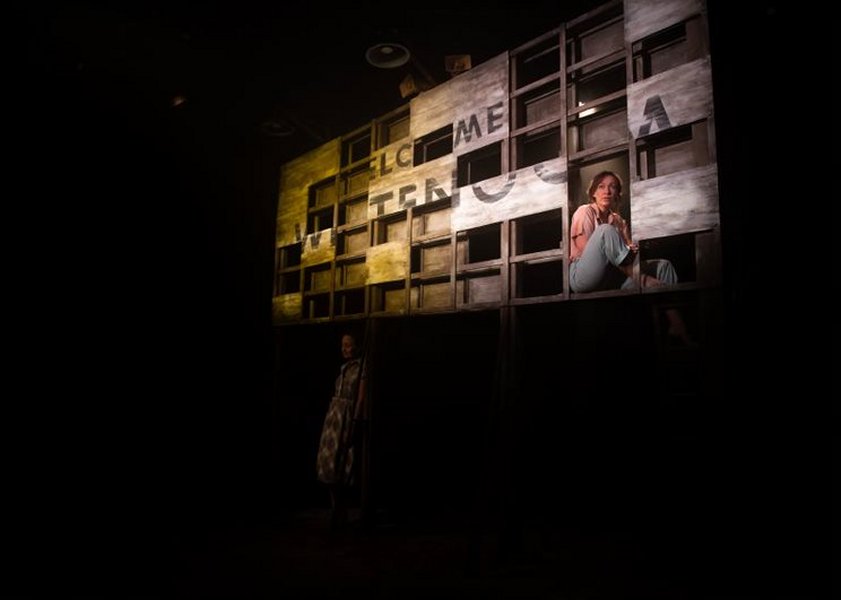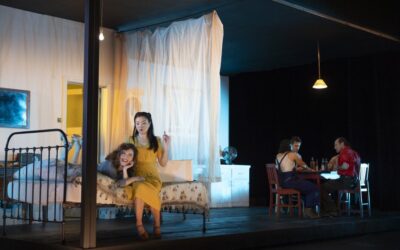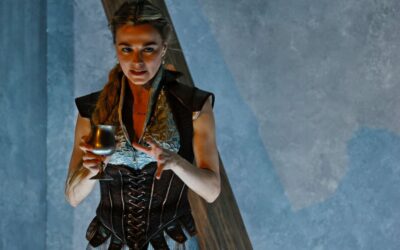By Ash Cottrell
It was a particularly hot day in Melbourne and as I approached the theatre, I found myself thinking more about the ability of the venue’s air conditioner to sustain me through sixty-five minutes, no interval, than the performance I was about to see.
After a few false starts getting along to this play, I finally saw it last Thursday evening at Red Stitch Actors’ Theatre. Wittenoom, written by Mary Ann Butler and directed by Susie Dee, was in short, a sensation. The writing took the audience on a frightful journey through some very dark history embedded deep in the Australian outback. The play was set against the backdrop of the infamous Wittenoom, Western Australia, located north-north-east of Perth – a former town, I’m ashamed to say that I knew nothing about until last week. Basic Google searches will tell you that Wittenoom was declared a contaminated site and ultimately closed in 2007, due to risk of asbestos poisoning. A great backdrop for a dramatic play, uncovering a terrifying part of our history and evidence of the human potential for greed. I was both horrified and hooked.
Wittenoom told the story of mother and daughter (Dot and Pearl, respectively) as they came to terms with a terminal diagnosis and the slow realisation that their town was built on a lie. Mining and the promise of a new future had brought them there and the play explores the rumbling horror of realising you are a part of something corrupt and broken. The storytelling also subtlety and effectively explored insidious racism and a lifetime of regret.
Truth be told, I’m a sucker for an outback Australiana story. Born and raised in a remote town myself, I perpetually find myself yearning for open spaces, irrespective of just how barren and unforgiving they can be. While the Australian landscape is celebrated in pop culture, what is often missed (but achieved here), is the foreboding nature of the outback, the terrifying loneliness and isolation that can be experienced in places like the Pilbara. It’s often not realised authentically on stage, not to mention, screen but the artistic team behind this performance did an excellent job of telling that story with beauty, simplicity, and an undeniable sense of drama.

Set and costume design (Dann Barber) were on point and with respect to the former, encapsulated interesting levels and spaces for the cast to tell this story. The lighting design was superb, (Rachel Burke and assistant, Spencer Herd), capturing the drama and even the palpable heat of the outback. All of these elements together prompted me to draw comparisons with other seminal Australian work such as, Wake in Freight, which had a similar presence on the stage and screen. It’s that sense that you get as an audience member (when work is this good), where you find yourself transported to another time and place.
With respect to performances, Caroline Lee and Emily Goddard bared their souls on stage for us and it was triumphant. They gave their respective characters lightness and took us by the hand through the darkness, shrouded in dread, fear and the realisation of irreversible damage. I was saddened to see that approximately two thousand people died as a result of asbestos poisoning in Wittenoom – a fact that I cannot get out of my mind. This play has managed to straddle a difficult space of tackling the enormity of the issues embedded in it, with humour and humanity. They did even more than that here, managing a performance that has continued to rattle around in my brain ever since. While this play has finished its run in Melbourne for the moment, I can only imagine that following its domestic premiere, many more iterations of the play will occur. And it will always be timeless because it deals with the universal themes of family, remorse, but also – unconditional love.
Quality work is always dependent on the substance of the writing, first and foremost. This story was not only compelling and engaging, but also had an inherent social justice slant to it. The call to action in this play was strong and further, it contributed to a newfound interest for me in this history. The audience appeared to love it as well. It is my personal belief that it would have garnered a standing ovation, had it not been so hot.
Images: Jodie Hutchinson





